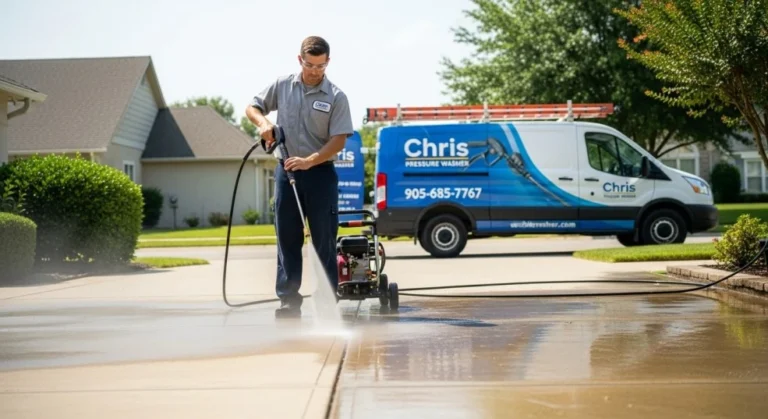When it comes to cleaning, the process is extensive, which means there are so many methods and techniques involved. Pressure washing and detailed cleaning are two popular cleaning methods often used in outside areas. As you can see, these two methods are similar, but there are some distinctions between them. In this article, we will look at the differences between pressure washing and detailed cleaning, so you can know which option is best for your needs.
Difference Between Pressure Washing and Detailed Cleaning

While pressure washing and detailed cleaning are both used to clean surfaces and areas, they differ in their application and method. Pressure washing uses high-pressure water to forcefully wash away dust, stains, and other forms of dirt from surfaces, more suitable for large outside spaces like driveways, porches, and walls. This method is very useful when it comes to the removal of hard stains and is normally faster than other forms of cleaning.
Detailed cleaning, however, requires a more thorough cleaning approach. It deals with areas that need particular care, where tools and soft washing agents are employed. It is ideal to use when there are details like trims or mouldings, window frames, rain gutters, and any other regions that are hard to reach. The use of this method takes time compared to rubbing, but it will give the surfaces a deeper washing that will revive them. It is essential to determine these differences since they influence the right method of cleaning to use, given a particular project’s cleaning needs.
Equipment and Tools Used
A second major difference between pressure washing and detailed cleaning is the tools and equipment used. This type of equipment can be useful to remove rust layers, but may not be appropriate to be used around delicate surfaces or regions with sensitive materials, as this results in the destruction of the materials.
On the other hand, detailed cleaning generally employs manual items such as brushes, sponges and rags in cleaning. These tools are less abrasive to the surfaces, and they are also useful where there are tight or complex corners to clean. Furthermore, detailed cleaning requires individual solutions for the various surfaces of a product to guarantee an excellent cleaning effect.
Cost and Time Considerations
It is also important to note that depending on the scale of the work pressure, washing could cost less than detailed cleaning of areas that liberally contain materials such as bricks and concrete, among others. Pressure washing is generally cheaper, primarily because its process is more efficient, and therefore less costly in terms of labor. However, it may not be the best solution for small areas or surfaces that need a mild abrasive cleaner to be used on them. This process might be time-consuming and involve more effort, and as such may be costly in some circumstances. These are important aspects that need to be taken into account when choosing which method will fit the budget and timeline best.
Which Method Is Best For You?
And finally, the choice of pressure washing and detailed cleaning remains the most appropriate, depending on your requirements. However, if you have a large exterior area that requires cleaning, very few things could be as efficient as Chris’ pressure washing. However, if you need a more refined and slower method for such small spaces or surfaces with fine patterns, then detailed cleaning should be the right one for you. Some factors which should guide your decision include the cost, the time you have to complete the project, and whether the content is sensitive or not.


